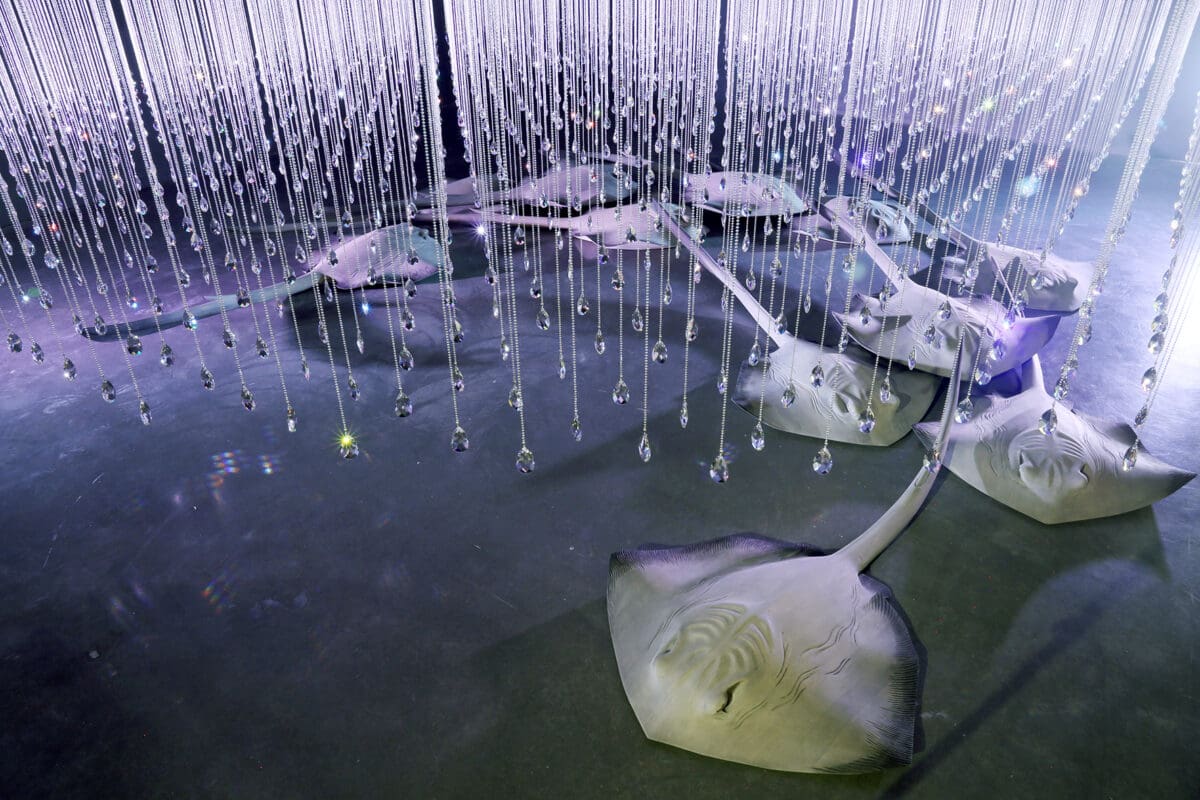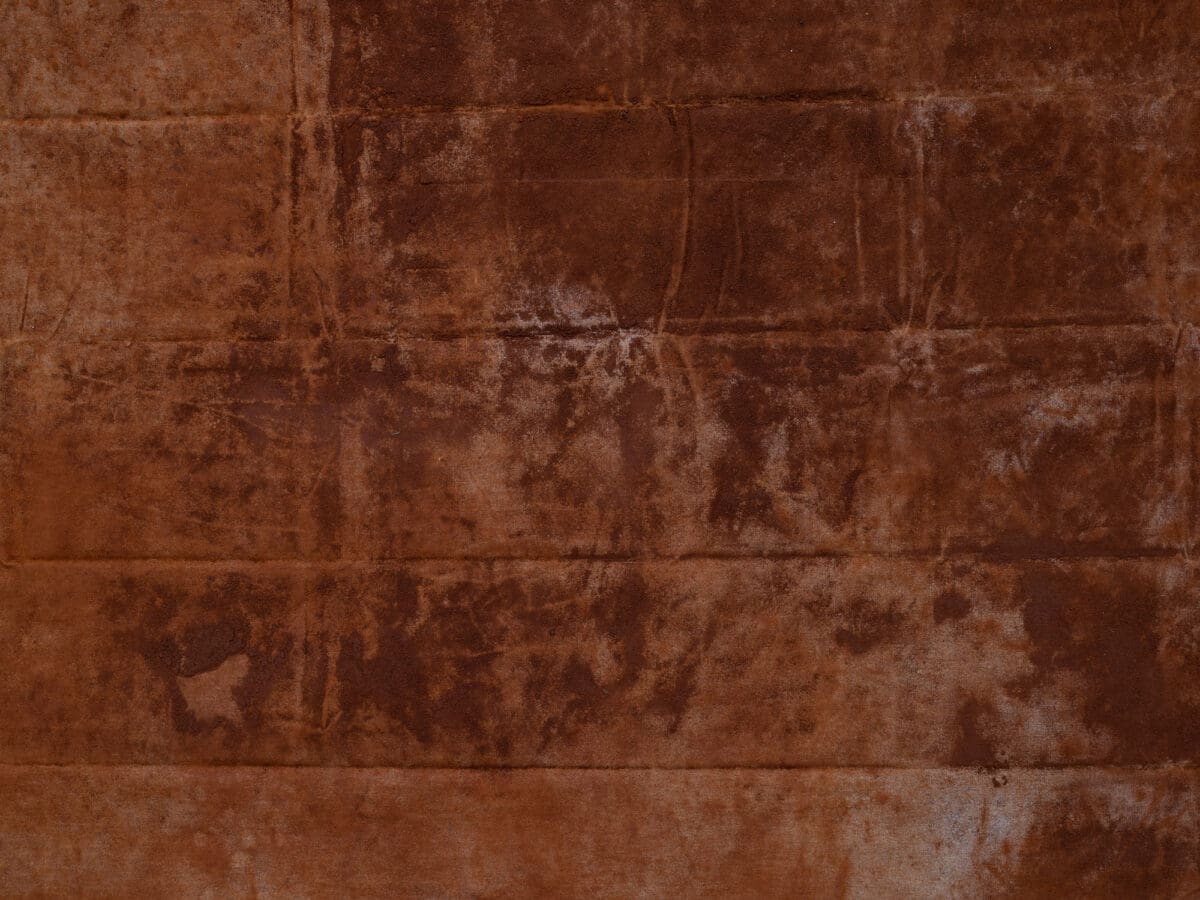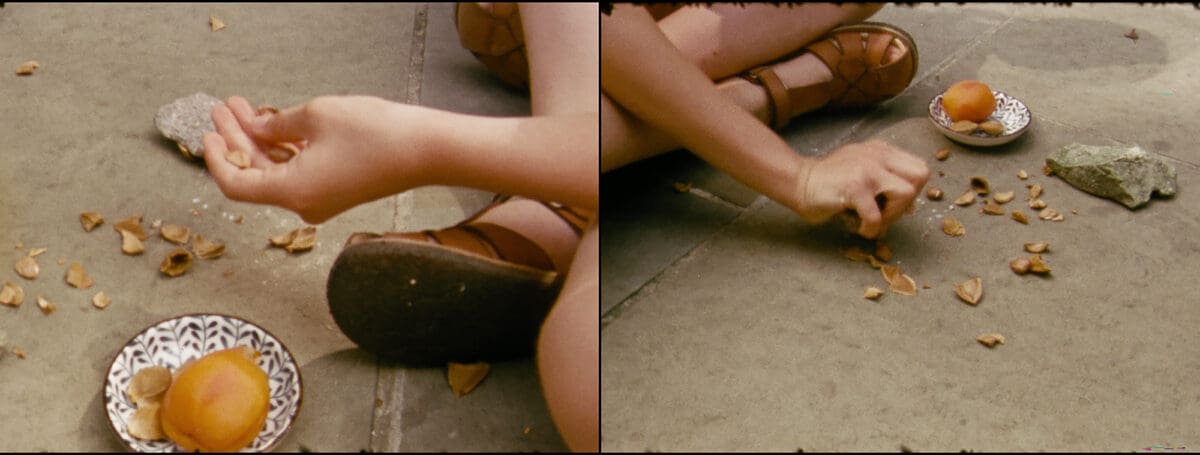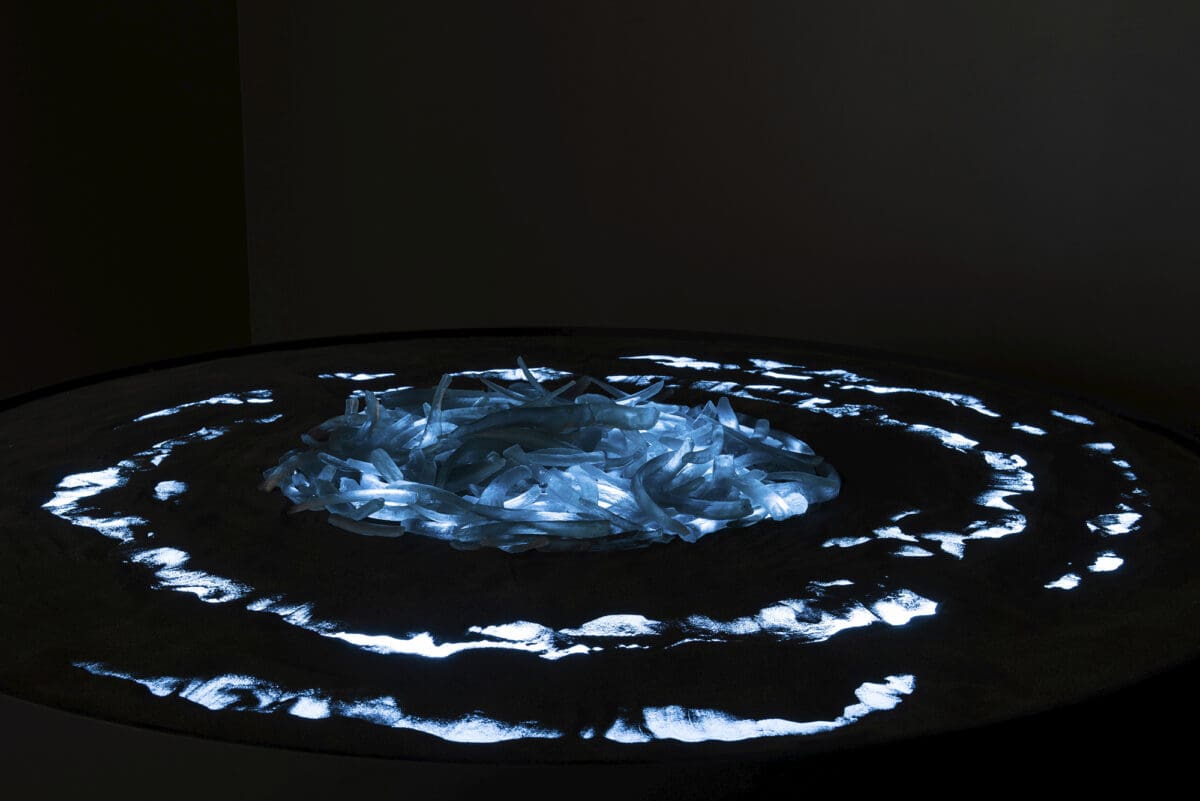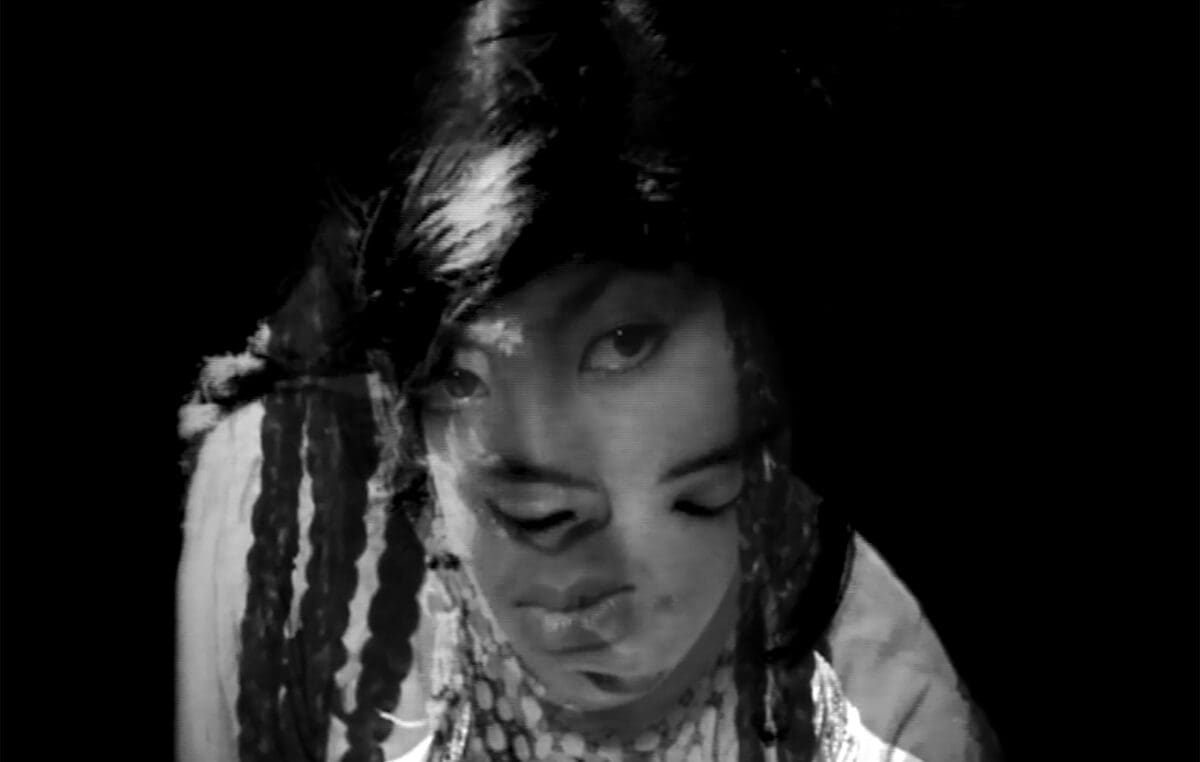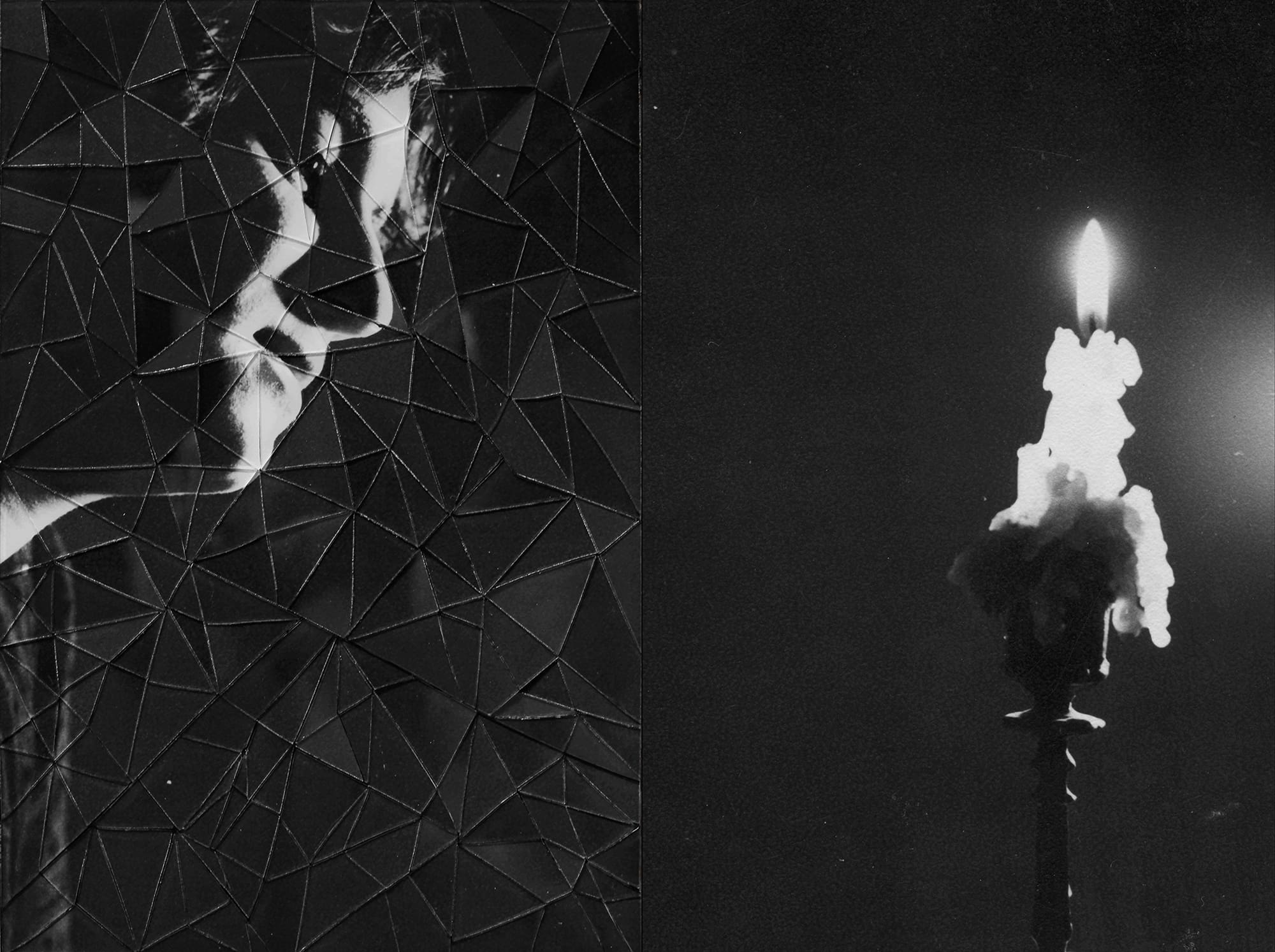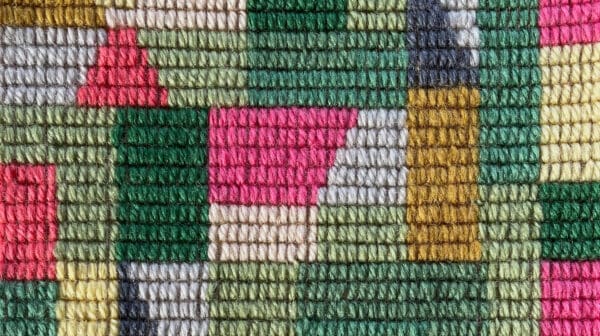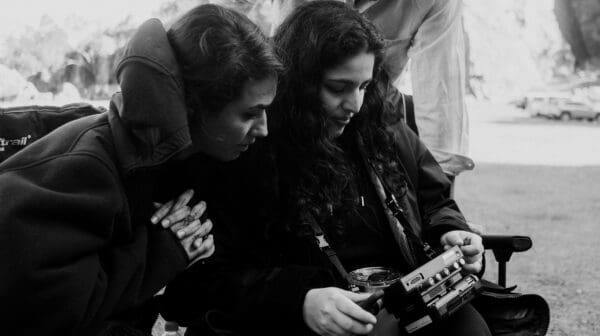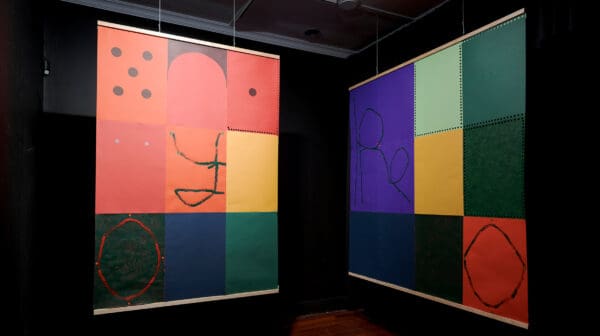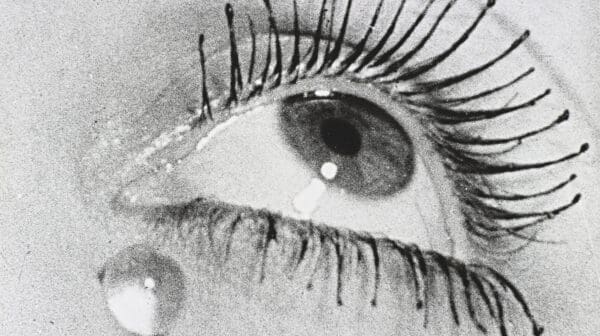A translated verse from the sixth and final volume of Mathnawi by Jalāl al-Dīn Rūmī greets visitors entering Five Acts of Love at the Australian Centre for Contemporary Art (ACCA), curated by Dr Nur Shkembi. Its opening lines signal the introspection that is perhaps an unspoken hope for visitors engaging with each of the twelve presenting artists.
Love is reckless, not reason.
Reason seeks a profit.
Love comes on strong, consuming herself, unabashed.
Shkembi structures the exhibition around five acts: resistance, revolution, intimacy, memory, annihilation. These aren’t passive themes, but active frameworks that shape the discursive space occupied by Abdul-Rahman Abdullah, Hoda Afshar, Megan Cope, Eugenia Flynn, D Harding, Saodat Ismailova, Khaled Sabsabi, Larissa Sansour & Søren Lind, Yhonnie Scarce, Ali Tahayori and the late Hossein Valamanesh. The exhibition firmly moves beyond a simple, feel-good notion of universal love. Instead, it highlights the demanding intellectual labour and depth of historicity within each artist’s practice. Here, love emerges as an apparatus of witness: entangled with struggles against coloniality, state violence, and erasure; sustained through diasporic memory and Indigenous sovereignty; forged within artistic form for the purpose of public engagement.
“Five Acts of Love offers a gentle unravelling of love,” says Shkembi. “The exhibition provides space for the visitor to join in the exploration of love beyond love, revealing the various manifestations of love inherent in the selection of artworks. Within the exhibition, nuanced connections between narratives and aesthetics are harnessed to create a delicate thread between intimacy, memory, resistance, revolution and annihilation (the Sufi idea of fanaa) as love.”
Shkembi says that the artworks are not neatly categorised, nor are they representative of single acts. “Rather, they offer a meditation across numerous acts and in various degrees—as a means for reflection.”

In the show, visitors will encounter the reticence and steadiness of nur ( نور ), or light, a passage and, for those receptive, a blessing that illuminates the spaces. This begins with Sabsabi’s multimodal installation At the Speed of Light (2016) which has a sightline to works by Valamanesh, The Lover Circles His Own Heart (1993) and In Praise of the Beloved (2006). Each artwork evokes subtle yet profound feelings, inviting deeply personal, spiritual or philosophical moments. Between them, a space—a maqam, meaning a place or position—is created for us to consider the indefinable, unknown or forgotten meaning of love, one that requires true surrender.
Within the constellation of Five Acts of Love, two works stand out as unassuming conduits, reclaiming narratives often narrowed by the ‘Western’ gaze when Islam or the cultures of Muslims are mentioned: Tahayori’s Archive of longing (2024-2025) and Abdullah’s Witness (2025).
Tahayori’s Archive of longing engages memory through the ancient Persian craft of Āine-Kāri or mirror work, traditionally used to adorn mosques with geometric mirrored patterning. In this work, Tahayori fractures family photographs, reassembling and restorying the fragments into intricate new geometries. This artistic act is a kind of transmutation. It subtly codes an alternative ancestral reality where the softness and existence of queerness is not erased, asserting its presence within Islamic faith and history. The source images, which are relics of a social moment preceding Iran’s revolution, originate from a time before the current theocracy weaponised religion to criminalise LGBTQIA+ individuals. Tahayori gambles with memory itself. His reassembly operates within a space of resistance and reclamation of intimacy. It’s a revolutionary act of querying the archive to imagine, and set the stage for a more abundant future. The glass shards reflect not just light, but possibilities suppressed.
“The photographic archive was significant to me personally as it revealed hidden facets of my mother’s life before I was born, but it was also meaningful collectively as it reflected aspects of Iranian daily life and culture,” Tahayori says. “Revisiting these images after thirty years, I started seeing numerous possibilities, affiliations, and connections not included in my mother’s original narrative. I began to tell my story with them. Photographs are fragments of reality, time, and place. In some ways, these works are fragments of fragments of fragments.”
Abdullah’s Witness is a life-size sculpture of a Palestine mountain gazelle. It occupies a clear position between Scarce’s glass forms N0000, N2359, N2351, N2402 (2014) and Sansour & Lind’s 2023 film Familiar Phantoms. The Arabic word for witness, shahid ( شاهد ) carries a profound duality, both as observer and martyr. The gazelle possesses a sentinel presence in the room. Framed upon entry, it evokes an innocence fused with quiet strength, speaking to the fleeting nature of existence. Encountering Witness creates a suspension in space and time. Through this form, Abdullah prompts awareness of the “flight initiation distance”—the critical factors and distance that trigger an animal’s decision to flee. Situated between two matriarchal works fiercely anchoring sovereignty against colonial erasure, Witness becomes an encounter charged with judgement and testimony. It demands recognition through the silent exchange of communal gaze.
“I wanted to create an encounter with a creature that is already fully aware of your presence,” Abdullah notes. “It watches its own audience with intense focus. The Palestine mountain gazelle survives through vigilance, understanding the truth of the exact moment and acting accordingly.”
Throughout the show, the presence of love exists as a kind of survival work. Tahayori and Abdullah, through their acts of reclamation and testimony, exemplify this demanding, revolutionary love within the exhibition’s broader cartography.
Five Acts of Love doesn’t present love as a mere set of curatorial concepts. Instead, the experience of the exhibition frames love as complex, perhaps beyond semiosis, as a series of lived knowledges that are rooted in the vastness of social imaginary across time. The exhibition also subtly challenges the dominance of language, questioning how the English word ‘love’ simplifies this abundance of action and effect. It does this by uncovering the rich understandings found in marginalised languages and cultures. Here, meaning arises polyphonically: through known language and, crucially, through embodied forms of understanding rooted in physical experience and collective belonging.
Five Acts of Love
Australian Centre for Contemporary Art
27 June—24 August


